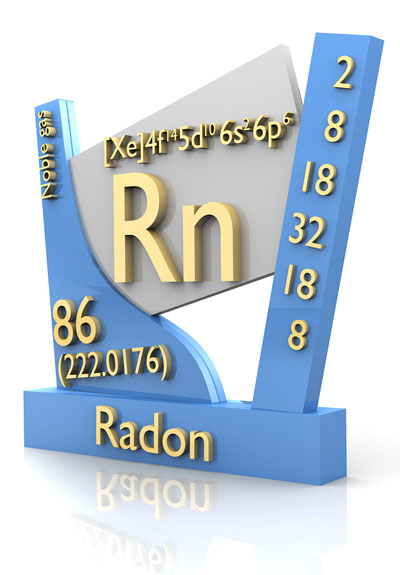
RADON TESTING
Radon is a cancer-causing, radioactive gas. You can't see radon, you can't smell it or taste it, but it may be a problem in your home. Radon is estimated to cause many thousands of deaths each year. That's because when you breathe air containing radon, you can get lung cancer. In fact, the Surgeon General has warned that radon is the second leading cause of lung cancer in the United States today. Only smoking causes more lung cancer deaths. If you smoke and your home has high radon levels, your risk of lung cancer is especially high. Radon can be found all over the U.S. It comes from the natural (radioactive) breakdown of uranium in soil, rock and water and gets into the air you breathe. It can get into any type of building — homes, offices, and schools - and result in a high indoor radon level. You and your family are most likely to get your greatest exposure at home where you spend most of your time. Testing is the only way to know if you and your family are at risk from radon. EPA and the Surgeon General recommend testing all homes below the third floor for radon, and an inspector certified to perform radon testing is one of your best sources to preventing radon contamination in your home.
Radon Monitoring
- We use professional electronic radon monitoring machines with tampering features, not the typical charcoal cannisters.
- VT & NH have no requirements or licensing for Radon testing, many bogus tests are done because of this not following EPA protocols. Our inspectors are professionally trained with on going continued education. We are Nationally Certified Radon Measurement Technicians AARST / NRPP #109452RT & 109452RT, NRSB #5SS0032
- We conduct 100% chain of custody testing of the radon content in the home per EPA protocols. Ensuring our clients of a test they can have confidence in. We do not rely on clients, owners or Realtors to complete the test, we conduct the test from A to Z (the way it should be done).
- We conduct clearing for professional mitigators and environmental companies after they have installed radon mitigation systems. Our high tech monitors with graphs are preferred by these organizations.
![]() More Insight
More Insight
Radon is a radioactive gas. It comes from the natural decay of uranium that is found in nearly all soils. It typically moves up through the ground to the air above and into your home through cracks and other holes in the foundation. Your home traps radon inside, where it can build up. Any home may have a radon problem. This means new and old homes, well- sealed and drafty homes, and homes with or without basements.



